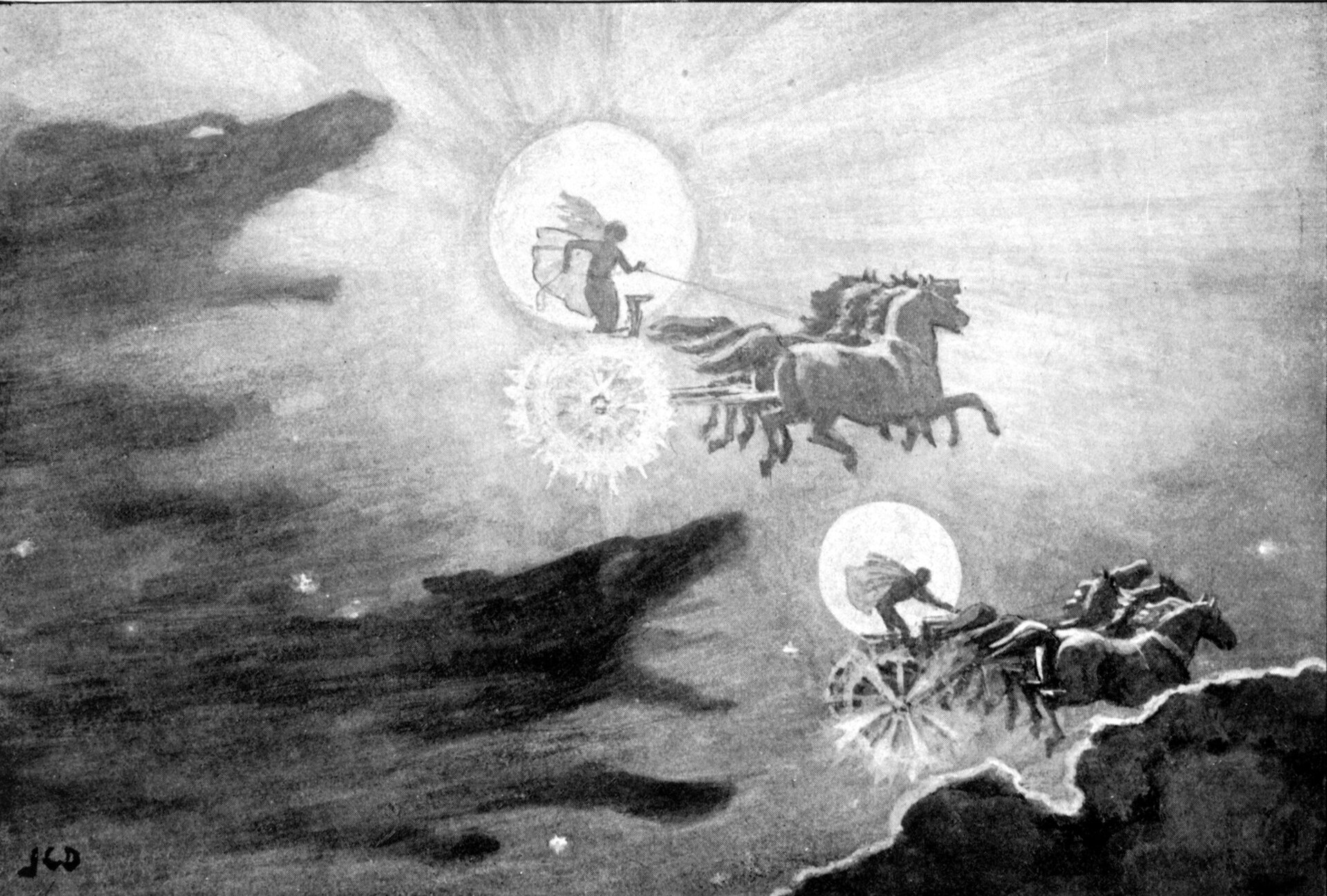Every day we bring a God or a Goddess associated with the day to inspire a daily message and spiritual guidance. It also serves to satisfy our curiosity and to point out how different cultures over time and space had or have similar ideas about the world and human psyche
In the intricate tapestry of Norse mythology, Sol represents a fascinating yet enigmatic solar deity. Unlike more extensively documented gods, her mythology is surprisingly brief, offering scholars a tantalizing glimpse into Germanic cosmological understanding.
Origins and Mythological Foundations of Sol
The primary sources for Sol’s mythology are the Poetic Edda and Prose Edda, written documents that provide limited but crucial insights into her divine role. In these ancient texts, Sol is not a fully developed character but a symbolic representation of the sun’s cosmic journey.
What is also interesting that the Sun in Germanic pantheon is feminine. Unlike a lot of her mythological counterparts, ancient Germanic people looked at the Sun as related to feminine nourishing and regenerating power.
Archaeological evidence suggests that solar worship in Germanic traditions was intrinsically linked to cyclical understanding of life and cosmic processes. Sol’s mythological journey is not linear but circular, mirroring the sun’s daily and seasonal trajectories. She is often depicted as a luminous charioteer, driving her solar vehicle across the celestial realm, symbolizing constant motion and renewal.

Archeological and Textual Evidence
Archaeological investigations provide limited direct evidence about Sol worship. Unlike some other Germanic deities, there are few definitive artifacts or extensive ritual descriptions specifically dedicated to her.
The scarcity of detailed mythological narratives about Sol presents an intriguing scholarly challenge. This absence suggests that in Germanic cosmology, solar deities might have been understood more as cosmic principles rather than anthropomorphic characters with elaborate personal histories.
Myth of Solar Pursuit and Cosmic Balance
One of the most captivating myths surrounding Sol involves her perpetual journey across the sky and the cosmic wolves that pursue her. According to Germanic mythological traditions, Sol was not merely traveling, but constantly fleeing from Skoll, a terrifying wolf representing darkness.
This wolf, whose name means “Mockery” or “Shader,” is predestined to chase the sun across the heavenly vault, symbolizing the eternal tension between light and darkness. In the cosmic narrative, Sol’s brother, Mani (the moon god), experiences a similar pursuit by another wolf named Hati.
This myth beautifully illustrates the Germanic understanding of cosmic balance—where light is always in motion, always challenged, but never completely consumed. The wolves represent the chaotic forces that threaten solar order, while Sol represents resilience, movement, and the unbreakable cycle of existence. Her daily journey is not just a physical movement, but a profound metaphysical struggle that ensures the continued functioning of the universe.
Sol in Cosmic Narrative and Mythological Cycles
The prophetic narrative of Ragnarök provides a dramatic backdrop to Sol’s mythological significance. During this apocalyptic event, Sol is destined to be devoured by the wolf Skoll, symbolizing the inevitable cycle of destruction and rebirth. However, mythology suggests that after Ragnarök, a new sun—presumably Sol’s daughter—will rise, representing perpetual renewal and hope.
In Old Norse mythology, a fragmentary tale recounts how Sol and her sister Sinthgunt, a goddess associated with the stars, joined forces with Odinto heal Baldr’s injured horse. The noble steed had stumbled and sustained a grave injury, leaving Baldr distraught.
Sinthgunt began the healing ritual, chanting ancient verses to mend the horse’s bones, while Sol bathed the creature in the life-giving warmth of her radiant light. Finally, Odin, the All-Father, used his mastery of runes and magic to complete the spell, weaving together their powers. Through their combined efforts, the horse’s leg was miraculously restored, showcasing the divine harmony between light, mystery, and wisdom.

These narratives powerfully illustrates the divine feminine’s capacity for regeneration, highlighting that even in apparent destruction, life finds a way to perpetuate itself. Sol’s story becomes a metaphorical representation of resilience, transformation, and eternal potential.
Contemporary Cultural Representations
Sol’s mythological legacy continues to inspire contemporary cultural expressions:
- Literature: Neil Gaiman’s “Norse Mythology” offers a modern reimagining of Sol’s narrative
- Video Games: “God of War” series features Nordic mythological references
- Museum Exhibitions:
- Museum of Cultural History, Oslo: Artifacts related to solar worship
- Nordic Museum, Stockholm: Permanent exhibition on Norse mythology
- Permanent Exhibition: “Celestial Narratives: Solar Mythology in Nordic Traditions”, website: www.nordiskmuseum.se
Conclusion
Sol represents more than a simple mythological figure. She embodies the Germanic understanding of cosmic movement—a symbolic representation of the sun’s eternal journey, challenging, persistent, and fundamentally mysterious.
Her mythology reminds us that ancient cosmological narratives were not just stories, but complex philosophical and astronomical interpretations of the world’s fundamental processes.
But nowadays, we know either too much or too little. If you think about it, in a Ragnarok scenario, if a star would be devoured by a black hole, science says there would no follow-up on this. All that remains is the constant darkness.
Myth of Sol offers a different conclusion. In her radiant journey, we find a mirror reflecting humanity’s eternal quest for understanding, transformation, and hope.



Comments
One response to “Sol: Illuminating the Mythology of Germanic Sun Goddess”
[…] bodies as dynamic, familial entities rather than static astronomical objects. His sister is Sol, the Sun […]